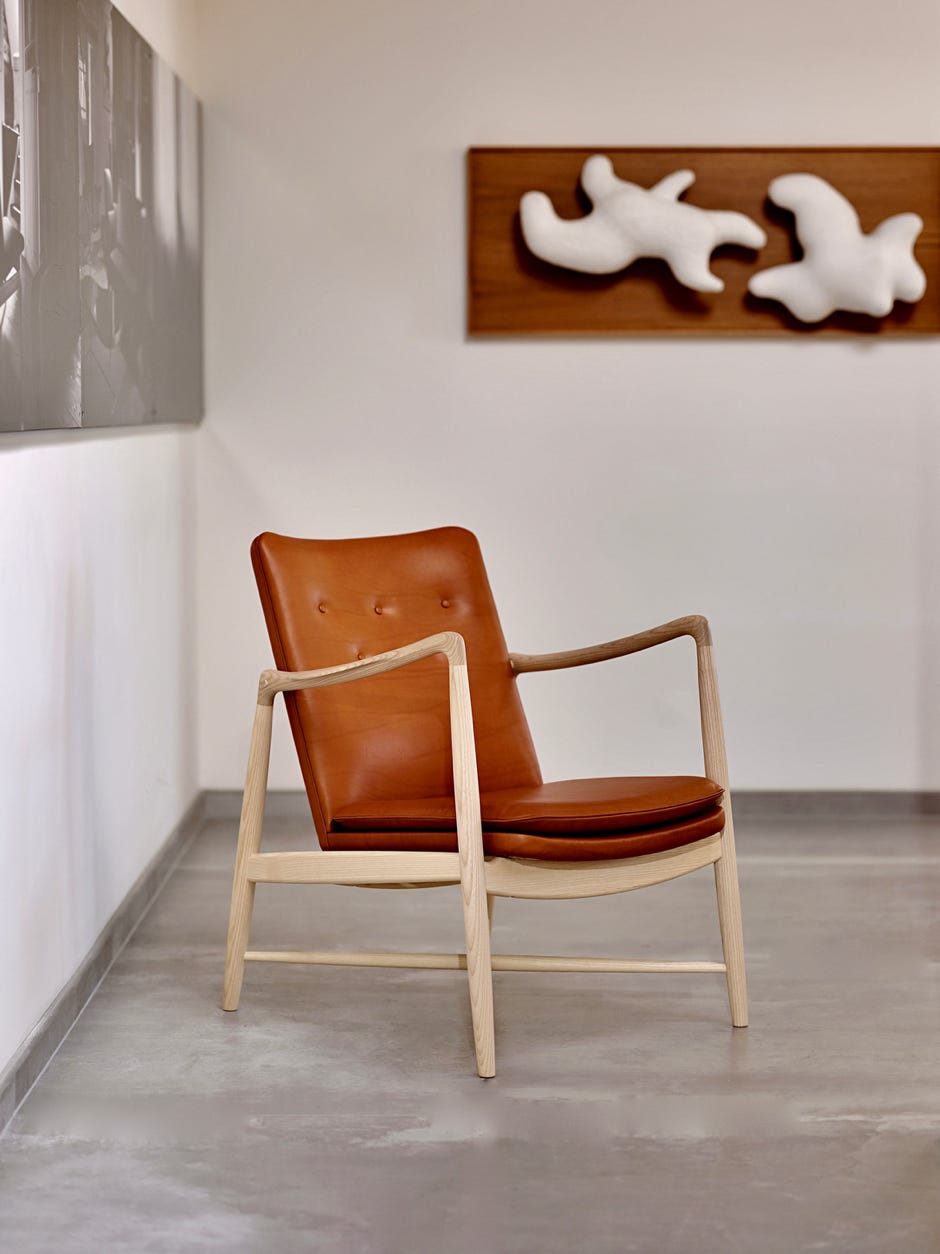
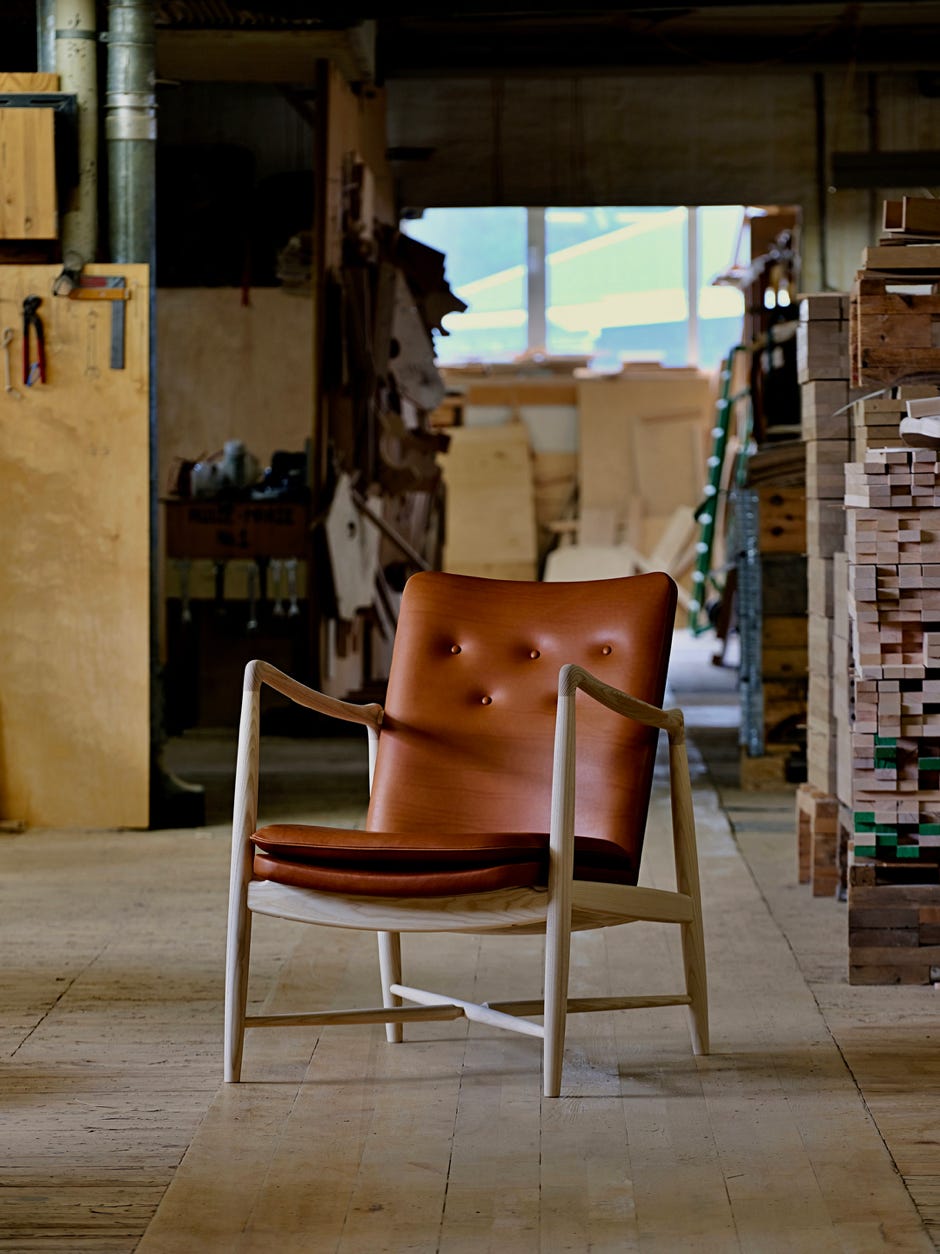
Designed after the war in 1946, the Fireplace chair has not been produced for six decades, despite being highly rated by auction houses worldwide. Its high desirability is due to a number of successful details, such as the armrest in the form of a paper cutter, and its remarkable comfort.
The chair belongs to the series of furniture that Finn Juhl designed in the 1940s and 1950s for the Danish company Bovirke. This furniture was mainly manufactured in Vejen, a small town where the furniture industry once flourished. In order to preserve the rich tradition of Danish craftsmanship, in 2022 House of Finn Juhl bought the company Schou Andersen Møbelfabrik, which is known for its solid wood work, and the Fireplace chair is now being produced there again.
The new Fireplace is made from FSC-certified ash wood and premium Danish Sørensen Leather, reflecting House of Finn Juhl's commitment to quality and sustainability.
For the record, the Fireplace Chair is an evolution of an armchair that Finn Juhl designed for the publisher Poul Westermann in 1943 and which was manufactured by Niels Vodder. The original model had the characteristic crossbars under the seat, but lacked the elegance of its successor.
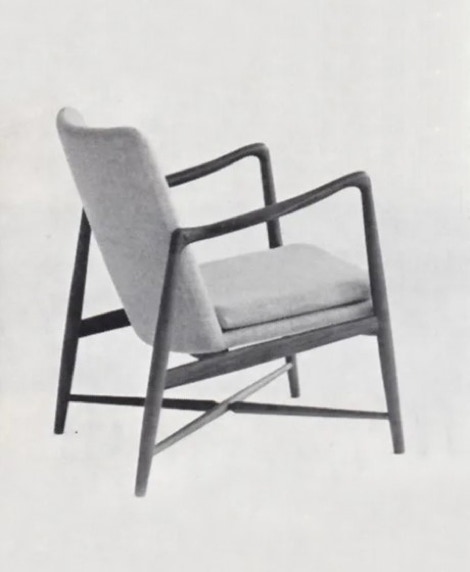
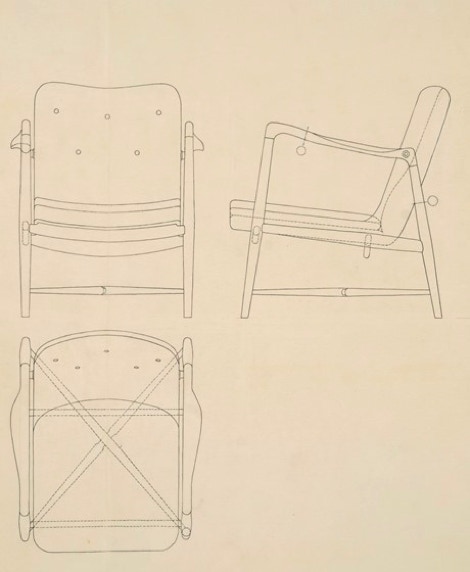
Dimensions W65 x D77 x H81 cm – Seat Height 41 cm
Wood ash, walnut or oak
Upholstery leather or fabric

The Fireplace chair
from
soaped oak
white oiled oak
oiled oak
clear lacquered oak
black painted
clear lacquered walnut
oiled walnut
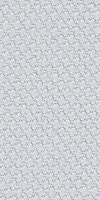
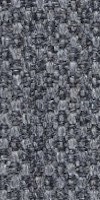
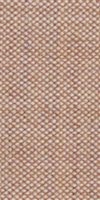


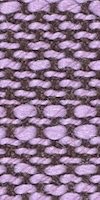
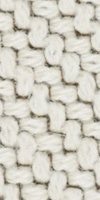
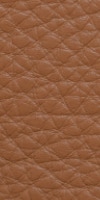

Hans Henrik Sørensen (Director of House of Finn Juhl): "With our own workshop in Vejen, we are able to produce even more Finn Juhl furniture on Danish soil. We are proud to continue this tradition and to ensure that it will flourish in Denmark in the future. By increasing our Danish production, we have even more control over our manufacturing processes, which we feel is crucial for the future we all face. At the same time, we continue to value our long-standing collaboration with the talented Japanese craftsmen who handle a small but important and complex part of the production. For over 20 years we have focused on uncompromising craftsmanship of the highest quality. We are proud to have established a balanced production structure."
Finn Juhl
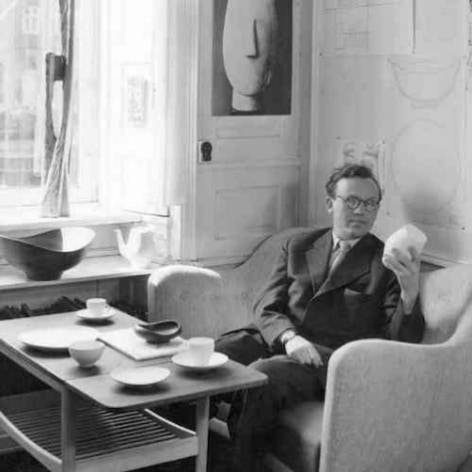
As a teenager, Finn Juhl (1912-1989) wanted to become an art historian after having been fascinated by fine arts since childhood. His father prevented him from doing so and he studied architecture. Later, once his reputation as a furniture designer had been acquired, he would speak of himself as a self-taught man, certainly in reference to this thwarted vocation which forced him to make his intellectual journey alone. His very singular style owes much to this non-linear trajectory, with a very unacademic interpretation of art visible in his work. Finn Juhl began his studies in 1930, a key period that saw the birth of modern design and furniture.
His ultra-modern offices in the center of Copenhagen greeted visitors with a huge Japanese paper fish, a symbol of imagination. And rather than approaching furniture design from a functional, classical perspective, Finn Juhl approached his work as a sculptor. He sought beauty in volume and form, life and expressiveness. An approach that in the 1940's and 1950's was totally unprecedented. For Finn Juhl, it was clear that a piece of furniture could not be limited to a function, but also had to express an artistic sensibility.
While he remains world-famous for his furniture, Finn Juhl also designed several interior architecture projects and a few industrial products, including IBM typewriters. His greatest commercial success was with the Baker Company in the United States, which allowed him to mass-produce several pieces of furniture.
As an architect, he is known for the interior design of the United Nations Council in New York.